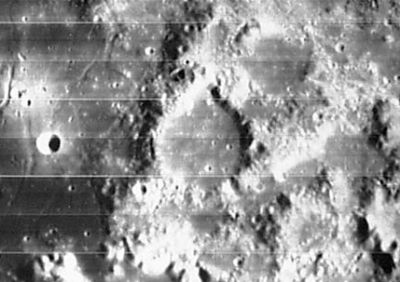Littrow
Contents
Littrow
| Lat: 21.5°N, Long: 31.4°E, Diam: 30 km, Depth: 1.23 km, Rükl: 25 |
Table of Contents

LOIV 078 H3 Littrow is the crater in the center. The 6-km circular crater on the far left is [/Clerke Clerke]. To its upper left is the set of small craters known as [/Catena%20Littrow Catena Littrow], and near both, the system of rilles known as [/Rimae%20Littrow Rimae Littrow]. The 23-km depression to the upper right of Littrow is Littrow A.
Images
LPOD Photo Gallery Lunar Orbiter Images Apollo Images
Maps
([/LAC%20zone LAC zone] 43D1) LAC map Geologic map LTO map
Description: Elger
([/IAU%20Directions IAU Directions]) LITTROW.--A peculiar ring-plain, rather smaller than [/Maraldi Maraldi], some distance N. of [/Vitruvius Vitruvius], on the rocky E. border of the [/Mare%20Serenitatis Mare Serenitatis]. It is shaped like the letter D, the straight side facing the E. There is a distinct crater on the N. wall. On the N.E. it is flanked by three irregular ring-plains, and on the S.W. by a fourth. Neison shows two small mountains on the floor, but Schmidt, whose drawing is very true to nature, has no detail whatever. A fine cleft may be traced from near the foot of the W. wall to [/Mons%20Argaeus Mount Argaeus], passing S. of a bright crater on the Mare W. of Littrow. It extends towards the [/Plinius Plinius] system, and is probably connected with it.
Description: Wikipedia
Additional Information
- Depth data from [/Kurt%20Fisher%20crater%20depths Kurt Fisher database]
- Westfall, 2000: 1.23 km
- Viscardy, 1985: 1.2 km
- Cherrington, 1969: 1.18 km
- A bright ray-craterlet slightly northward of Littrow F (between Littrow F and [/Brewster Brewster]) (more precisely at 22°25' North/ 34° East) is described and depicted in NASA SP-362, APOLLO OVER THE MOON; A VIEW FROM ORBIT, Chapter 5: Craters (Part 2), Figure 117.
- Satellite crater Litrow Ba is on the [/ALPO%20list%20of%20bright%20ray%20craters ALPO list of bright ray craters].
- Satellite crater Littrow D is on the [/ALPO%20list%20of%20banded%20craters ALPO list of banded craters]
Apollo 14 and the low-albedo region west of Littrow
If Apollo 13 was a mission without problems, the Descent Stage of LM Aquarius was now sitting near the Cone crater north of Fra Mauro. The astronauts of Apollo 14 would have landed their LM Antares somewhere at or near the low-albedo region west of Littrow. (source: David M. Harland's Exploring the Moon: the Apollo expeditions).
Lunar Ellipse of Fire
Littrow is (or was?) number one in the list of 12 localities in the Lunar Ellipse of Fire (see article from Farouk El-Baz in Sky and Telescope - June 1973).
Nomenclature
- Named for Joseph Johann von Littrow (March 13, 1781 – November 30, 1840), an Austrian astronomer. Littrow became director of the Vienna Observatory in 1819 and is credited with many improvements made there. He served in this position until his death in 1840. He was a well-know personage, both for his professional Atlas of the Starry Heavens (see Google books) and for his many works intended for the general public, including his highly popular Die Wunder des Himmels (The Wonder of the Heavens), which appeared in numerous editions. He also created the only conformal retroazimuthal map projection, which is known as the Littrow projection. (ref: The Americana) The name "Littrow" also appears frequently in the field of spectroscopy, but the introduction of the Littrow spectroscope seems to have occurred around 1863 (see footnote, page 336, of Pulfrich, 1895), and hence is probably associated with Johann's son, Karl, who followed in his father's footsteps as director of the Vienna Observatory. Karl is not honored by the present crater name. - JimMosher JimMosher
- According to [/Whitaker Whitaker] (p. 219), this name was introduced by [/M%C3%A4dler Mädler]. It was part of the original IAU nomenclature of [/Named%20Lunar%20Formations Named Lunar Formations] (1935).
LPOD Articles
Bibliography
The son of Joseph Johann von Littrow (Karl Ludwig von Littrow), is probably the Carl von Littrow who's mentioned on page 230 in Volume 2 of T.W.Webb's Celestial Objects for Common Telescopes (Dover, revised edition, 1962), see introduction TAURUS.
Farfetched perhaps, but... it must be some sort of coincidence; the fact that Littrow is a crater in the TAURUS mountains on the moon...
- DannyCaes DannyCaes Aug 8, 2015
This page has been edited 1 times. The last modification was made by - tychocrater tychocrater on Jun 13, 2009 3:24 pm - afx3u2